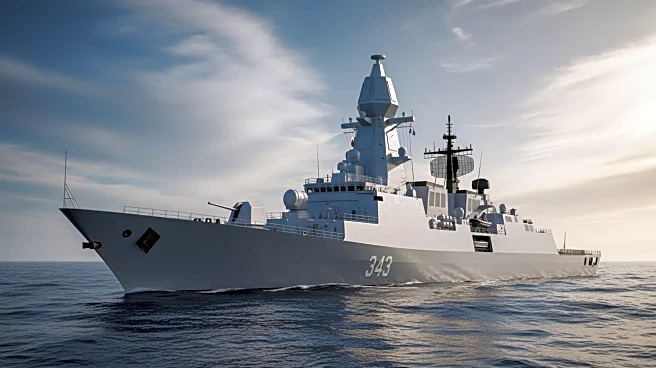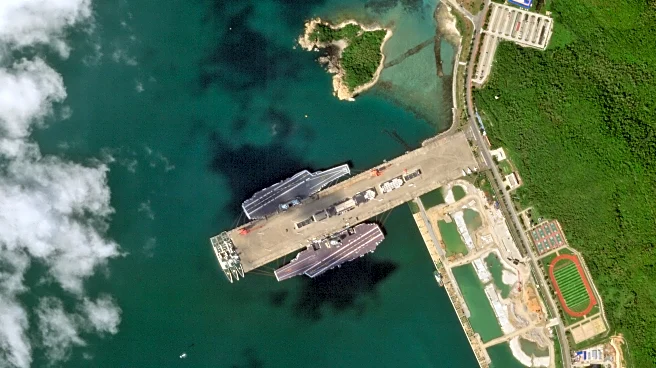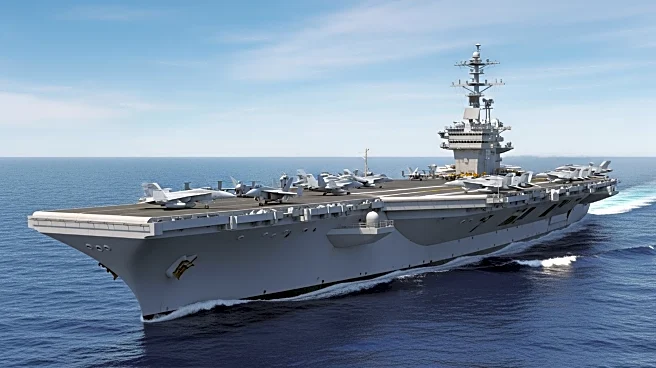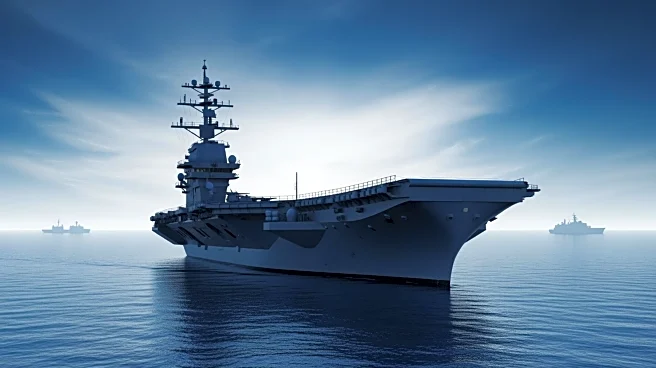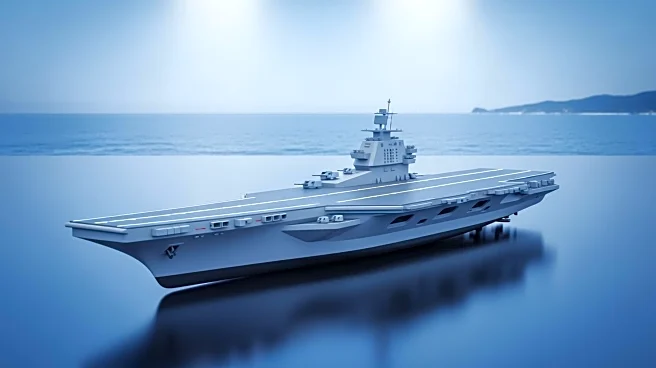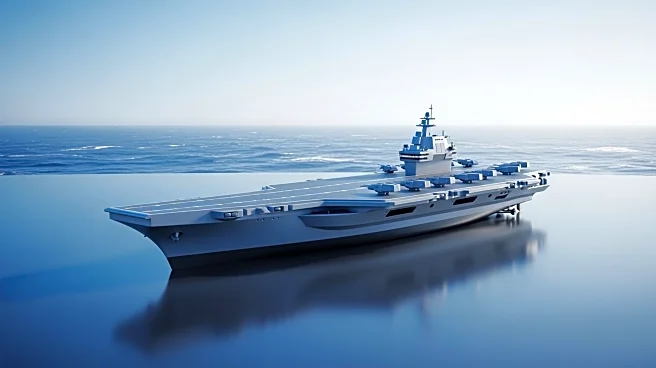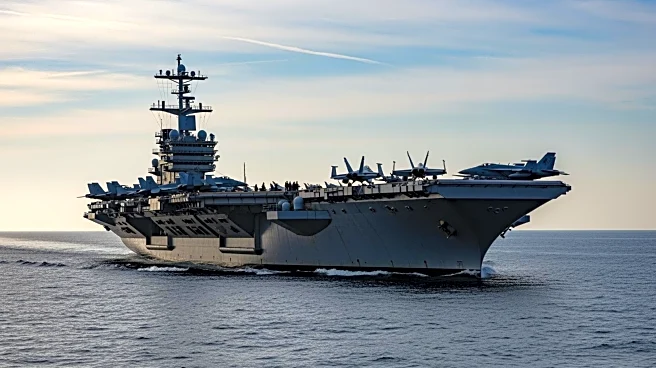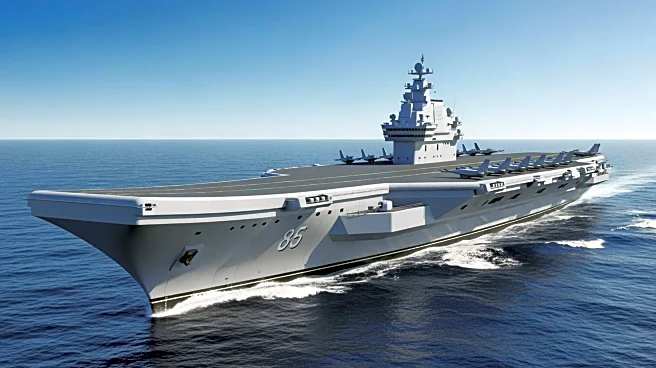What's Happening?
The Chinese navy has confirmed that its newest and most advanced aircraft carrier, CNS Fujian, will be stationed at the Yulin Naval Base in the contested South China Sea. This move is part of China's broader
strategy to assert control over the region, where its territorial claims overlap with those of several other countries. The Fujian, equipped with electromagnetic catapults, is China's third aircraft carrier and represents a significant enhancement in its naval capabilities. The decision to homeport the Fujian in the South China Sea underscores China's military strength in a region where the United States frequently deploys its aircraft carriers. Senior Captain Leng Guowei, a spokesperson for the Chinese navy, stated that the Fujian will continue tests and training exercises to strengthen its combat capabilities.
Why It's Important?
The deployment of the Fujian in the South China Sea is a critical development in the ongoing geopolitical tensions between China and the United States, as well as other regional allies. China's claims over the South China Sea have been a point of contention, leading to standoffs and maritime clashes. The presence of a second Chinese aircraft carrier in the region signals a robust military posture, potentially challenging U.S. naval operations and influence in the Indo-Pacific. This move could escalate tensions and impact international relations, particularly with countries like the Philippines, which have disputed China's territorial claims. The strategic positioning of the Fujian may also influence future military engagements and diplomatic negotiations in the region.
What's Next?
The Fujian's deployment east of the First Island Chain, which includes Japan, Taiwan, and the Philippines, remains uncertain. This defensive line is part of a U.S. strategy to project military power against China. The situation may lead to increased military activity and surveillance in the region, with potential diplomatic responses from affected countries. The U.S. Navy's continued presence in the western Pacific, including the deployment of aircraft carriers like USS Nimitz and USS George Washington, indicates ongoing efforts to maintain a free and open Indo-Pacific region. Future developments may include diplomatic talks or military exercises aimed at de-escalating tensions.
Beyond the Headlines
The deployment of the Fujian highlights the broader implications of China's military expansion and technological advancements. The use of electromagnetic catapults on the Fujian represents a significant leap in naval technology, potentially altering the balance of power in the region. This development raises questions about the future of naval warfare and the role of technology in military strategy. Additionally, China's assertive actions in the South China Sea may influence global perceptions of its foreign policy and military ambitions, affecting its relationships with other nations.
